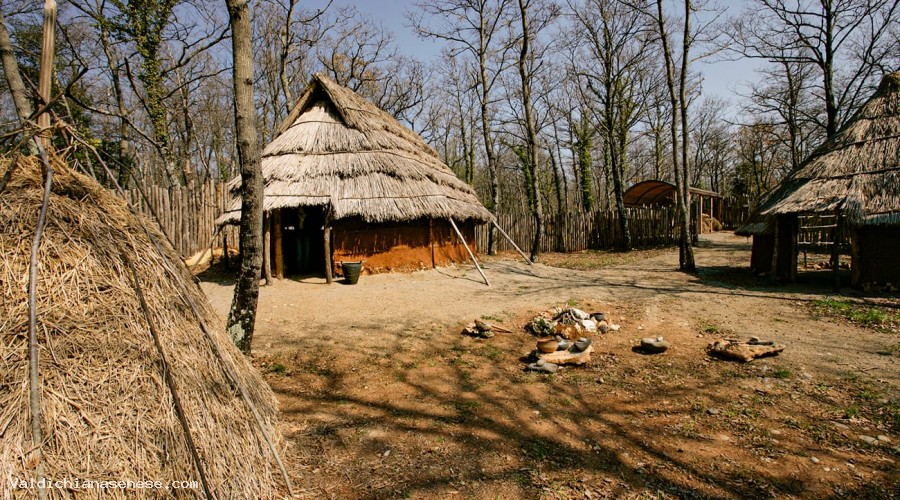Museums
Museo Civico per la Preistoria del Monte Cetona e Parco Archeologico
CETONA
Time table
Saturdays, Sundays, pre-holidays and holidays, from 10 to 13 and from 15 to 18.TICKETS: Museum € 3.00; Park and Archeodrome € 3.00; cumulative Museum, Park and Archeodrome € 5.50.
It is advisable to book the visit by telephone or e-mail or consult the museum's FB page for more information.
Civic Museum of Prehistory of Mount Cetona and Archeological Park.
Thanks to the discovery of several rare findings, the Civic Museum of Prehistory of Mount Cetona encompasses the various phases of human population in the territory that gravitates around Mount Cetona, from the Paleolithic Age to the Bronze Age. The natural, archeological park of Belverde, where the main prehistorical settlements are located is strictly connected to the museum. It’s possible to visit some of the cavities that open up in the travertine, adequately lighted and equipped, as the cave of Saint Francis, the caves of Noce and Poggetto, frequented by man, for funeral or religious purposes, and the rest of the outside settlements, object of recent excavations. The park area is also characterized by the presence of vegetable agglomerations that show hardly any signs of human interference ( aged beech trees; common box trees, tall holm oak trees) a sort of oasis, that one can walk through following fixed paths, where the historical, archeological and naturalistic elements are intimately connected. The nearby Service Center linked to the Park, aside an information point and an exhibition room, hosts a bar where visitors can take a break.
Civic Museum of Prehistory of Mount Cetona and Archeological Park.
Thanks to the discovery of several rare findings, the Civic Museum of Prehistory of Mount Cetona encompasses the various phases of human population in the territory that gravitates around Mount Cetona, from the Paleolithic Age to the Bronze Age. The natural, archeological park of Belverde, where the main prehistorical settlements are located is strictly connected to the museum. It’s possible to visit some of the cavities that open up in the travertine, adequately lighted and equipped, as the cave of Saint Francis, the caves of Noce and Poggetto, frequented by man, for funeral or religious purposes, and the rest of the outside settlements, object of recent excavations. The park area is also characterized by the presence of vegetable agglomerations that show hardly any signs of human interference ( aged beech trees; common box trees, tall holm oak trees) a sort of oasis, that one can walk through following fixed paths, where the historical, archeological and naturalistic elements are intimately connected. The nearby Service Center linked to the Park, aside an information point and an exhibition room, hosts a bar where visitors can take a break.